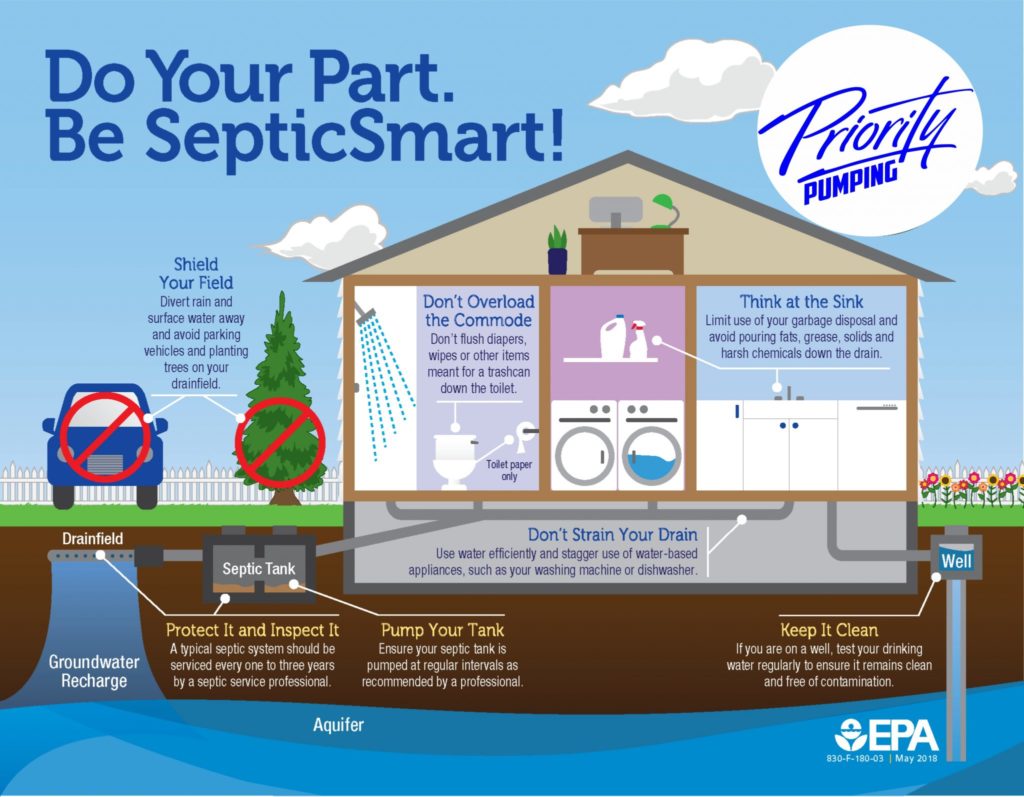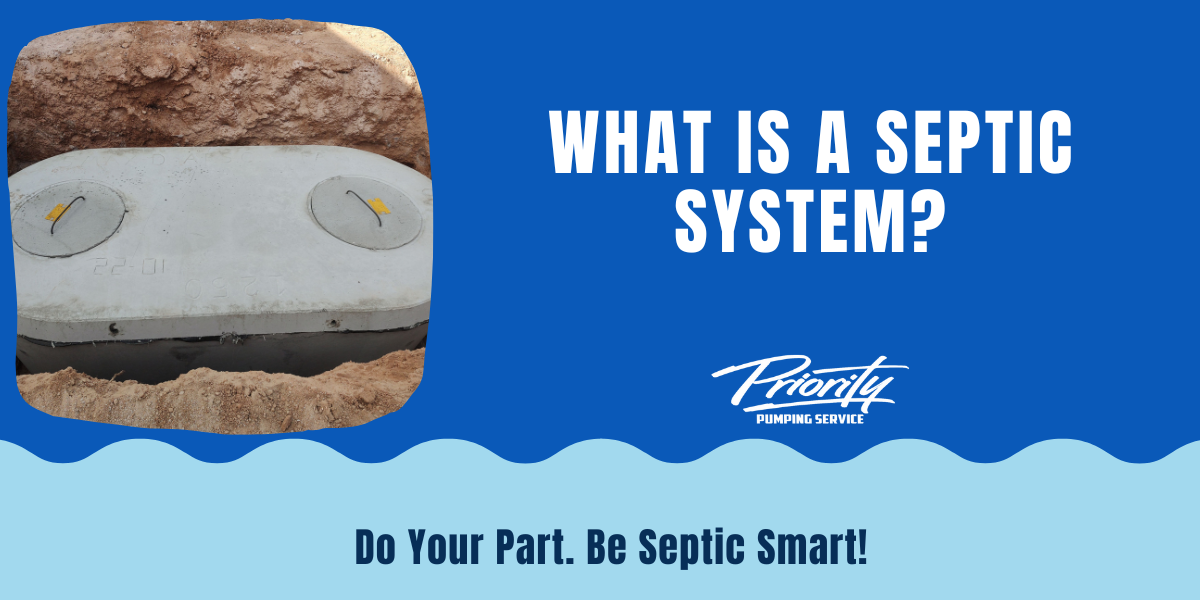A septic system is a two-part system.
The first part of the system is the septic tank. This is where all the solid and liquid waste is collected from the plumbing lines inside the home. Think of it as the collection spot for everything that is flushed down a toilet or a drain.
The second part of the septic system is the disposal field or leach field. This is where the effluent water from the septic tank goes to be treated before it is absorbed into the ground soil. The water will be further treated to rid all bacteria before re-entering the water table below the leach field. Pretty cool, huh! It’s as if you have your own individual sewer system at your home.














